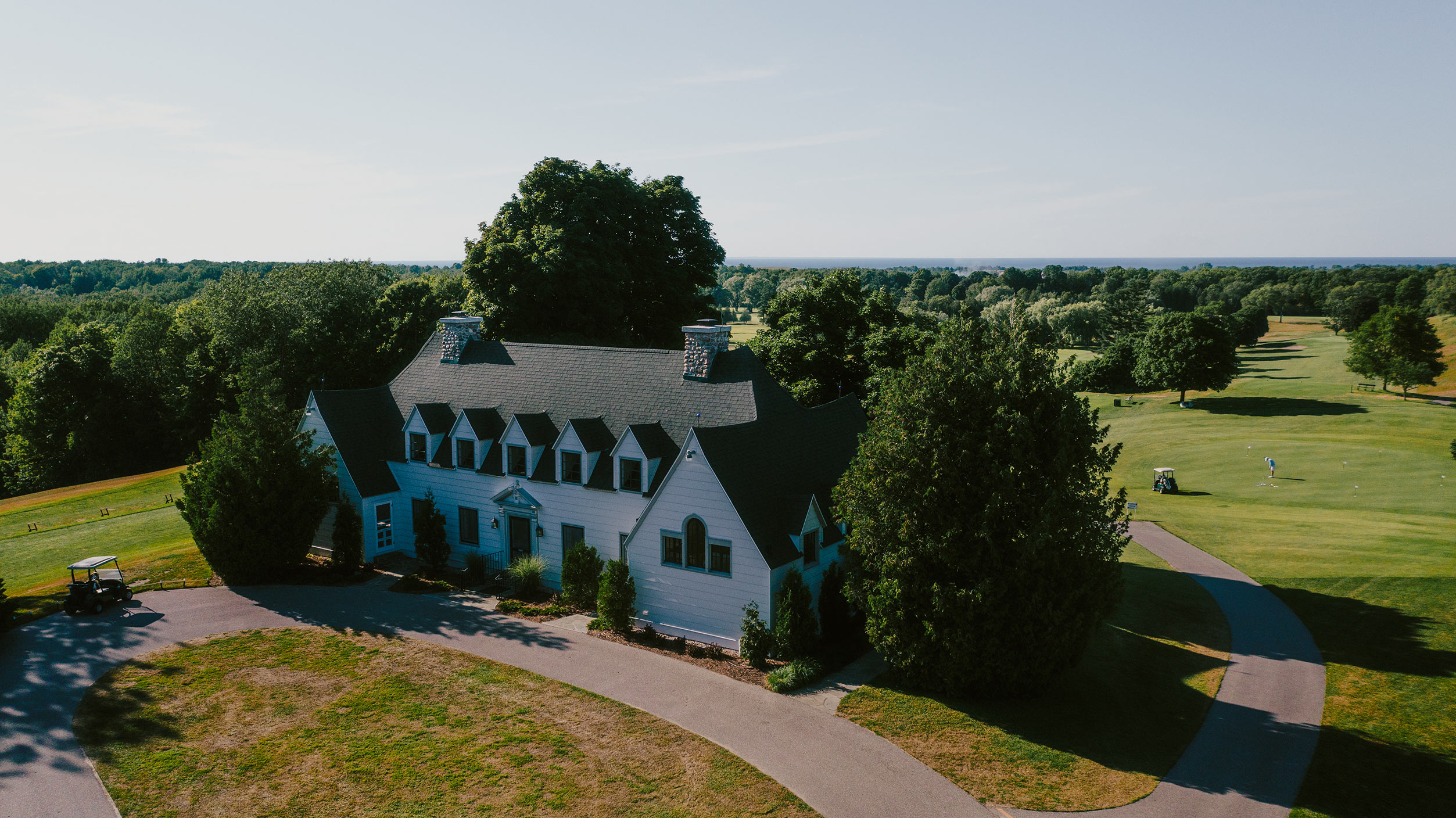Orinda Country Club
Orinda is small but fierce, and full of opportunities for creative shotmaking, thanks to a Willie Watson original routing on hilly land and a tasteful renovation by Todd Eckenrode

Orinda, California, USA
William Watson (original design, 1924); Todd Eckenrode (renovation, 2015)
Private
$$$
Superintendent Series: Joshua C.F. Smith of Orinda Country Club and FlagBag Golf Co.
The golf course at Orinda Country Club, designed by William Watson in 1924, meanders through the hills east of Berkeley and Oakland, California. Despite the land’s severity, the course is not excessively arduous to walk, spanning just 6,313 yards from the tips. By the 2010s, Orinda had become over-treed and choked by rough. The club hired Todd Eckenrode to conduct a historically informed renovation, nicknamed “Project Watson.” Assisted by shapers Brett Hochstein and George Waters, as well as superintendents Bob Lapic and Josh Smith, Eckenrode removed numerous trees and bushes, enlarged greens and short-grass surrounds, and reconstructed the bunkers in the rough-edged style characteristic of 1920s Northern California golf architecture. The result, unveiled in late 2015, is an example of tasteful architectural stewardship that other Golden Age clubs should emulate.
{{content-block-course-profile-orinda-country-club-001}}
Take Note…
The clubhouse debate. William Watson and owner E.I. DeLaveaga disagreed about the location of Orinda’s clubhouse. Watson proposed situating it on a hill near the current second, third, and 11th holes, a spot that would have enabled returning nines. DeLaveaga, however, preferred a more dramatic site on a bluff overlooking a valley. He won the debate, and Watson created an out-and-back routing with the ninth green sitting about a third of a mile from the clubhouse.
Whoa. I usually side with golf architects in disputes over clubhouse placement, but in this case, I have to hand it to Mr. DeLaveaga. Orinda’s clubhouse, a Spanish-Mediterranean-style structure nestled into a rocky promontory, is one of the most impressive I’ve seen.
Renaissance dude. Orinda superintendent Josh Smith not only oversees ongoing improvements to the course but is also an accomplished painter and the co-founder of Flag Bag Golf, a company that crafts golf bags from customers’ pin flags. Andy’s interview with Josh is one of our favorite episodes of the Superintendent Series.

Favorite Hole
No. 14, par 4, 239-285 yards
The 14th at Orinda is basically a connector, occupying a quiet piece of land between two dynamic par 3s, but it’s also one of the most strategically compelling holes on the course.
The basic concept here is that the more you attack, the smaller your margin for error becomes. A large bunker cuts diagonally into the fairway between 215 and 235 yards from the back tee, pushing the aggressive line to the right, toward a ravine. The green is narrow, angled, and flanked by gnarly bunkers. If you go for the green but miss left or right, par becomes a good score. On the other hand, laying up short of the fairway bunker on the left yields a straightforward wedge approach up the length of the green.
Favorite Hole
No. 14, par 4, 239-285 yards
The 14th at Orinda is basically a connector, occupying a quiet piece of land between two dynamic par 3s, but it’s also one of the most strategically compelling holes on the course.
The basic concept here is that the more you attack, the smaller your margin for error becomes. A large bunker cuts diagonally into the fairway between 215 and 235 yards from the back tee, pushing the aggressive line to the right, toward a ravine. The green is narrow, angled, and flanked by gnarly bunkers. If you go for the green but miss left or right, par becomes a good score. On the other hand, laying up short of the fairway bunker on the left yields a straightforward wedge approach up the length of the green.
The green itself is a showcase for the meticulousness of Todd Eckenrode’s 2015 work. As shaper Brett Hochstein explains in this blog post, the renovation team lowered the front left corner of the putting surface and raised the back lip of the left bunker. This change created an illusion from the fairway of the back left corner of the green floating above the sand—a nifty effect.
{{content-block-course-profile-orinda-country-club-002}}
Overall Thoughts
In the first half of the 20th century, golf architects couldn’t rely on cart paths to make hilly properties functional. This constraint produced a lot of creativity. At Bel-Air Country Club, George Thomas commissioned tunnels, an elevator, and a bridge to connect the deep, narrow canyons where he laid out his golf holes. These built features have a unique charm—and likely would not exist if Thomas and his client had known that carts would soon rule the fairways.
Orinda Country Club’s land is nearly as rugged as Bel-Air’s, but William Watson did not use, or perhaps did not have access to, as much engineering as Thomas did. Instead, Watson turned to fundamentals. He located many greens and tees on hilltops, allowing for short transitions between them. He traversed abrupt elevation changes with tee shots, par 3s, and short par 4s, and he maximized naturally golfable terrain by clustering holes closely together on three main paddocks. Since Watson couldn’t move large amounts of earth, there are some awkward moments, such as the plunging, mostly blind first hole. However, because these quirks stem from the natural landscape, they feel authentic rather than irritating.
Watson also achieved a balance of uphill and downhill shots in his routing. Consider the opening stretch: the par-4 first hole plays downhill, the par-4 second uphill, and the par-3 third downhill. The fourth, a shortish par 5, features an uphill tee shot and a downhill second, while the fifth, a shortish par 4, has a downhill tee shot and an uphill second. These shifts continue throughout the course, preventing players from settling into a driving-range groove.
Orinda’s four par 3s exemplify the variety of Watson’s design.
At 251 yards from the back tee, the third hole calls for a right-to-left shot that lands well short of the green and trundles on—entertaining to watch but nerve-wracking to attempt. Three bunkers on the left may prompt you to bail out to the expanse of short grass on the right. From there, however, you’ll face a pitch from a tight lie over a mound to a green that falls away.
{{content-block-course-profile-orinda-country-club-003}}
The eighth hole is as small and constricted as the third is big and expansive. A faithful reproduction of Watson’s 1924 design, this par 3 requires a precise wedge from an elevated tee to a postage-stamp green. There is no good miss, with bunkers short and to the right, and short-grass run-offs behind and to the left. Brett Hochstein refers to this hole as a “terrifying menace,” and he’s not exaggerating.
{{content-block-course-profile-orinda-country-club-004}}
The 13th, while excellent, is the least distinguished of Orinda’s par 3s, but Eckenrode’s renovation improved it significantly. By replacing bunkers on the left with a short-grass ramp, the hole now allows low-trajectory players to feed the ball around a single fronting pot bunker. Subtle ripples toward the back of the green create fun, challenging pin positions.
{{content-block-course-profile-orinda-country-club-005}}
The final par 3 at Orinda, No. 15, has a remarkable setting, with a barranca running diagonally across the line of play and creating a natural stage for a Redan-like green. Watson’s version of the hole was striking enough to feature in Robert Hunter’s book The Links, and Eckenrode wisely chose to restore the original bunkerless concept.
{{content-block-course-profile-orinda-country-club-006}}
Finding unique, memorable holes like these and linking them together on a difficult site were Watson’s greatest achievements at Orinda. What brings the course to life, though, is the abundance of short grass around the greens. The closely mown mounds on Nos. 3, 7, 11, and 12, for instance, can either help or hurt you: on approaches from good angles, they can funnel your ball toward the pin; on recovery shots, they can turn into complex obstacles. You can negotiate them with an array of shots, from flops to bump-and-runs to Texas wedges, all of which take skill and soft hands to execute.
The renovated Orinda Country Club is an outstanding example of a “sporting” golf course—small but fierce, and full of opportunities for creative shotmaking. -GM
1 Egg
Orinda receives an Egg for presentation. Between Eckenrode’s renovation and Smith’s maintenance, the course is close to maxing out its potential. We’re fans of both the design and the land, but the former has a few weak links (holes 1, 16, and 18 in particular) and the latter is too severe and disjointed to be considered extraordinary. A reminder: one Egg is an excellent score, and two Eggs is a high bar to clear!
Additional Content
Superintendent Series: Joshua C.F. Smith of Orinda Country Club (podcast)
The Underappreciated Craft of Golf Course Drainge (article)
The Up-and-Over (article by Brett Hochstein)
Course Tour

{{content-block-course-profile-orinda-country-club-007}}
Leave a comment or start a discussion
Get full access to exclusive benefits from Fried Egg Golf
- Member-only content
- Community discussions forums
- Member-only experiences and early access to events













Leave a comment or start a discussion
Lorem ipsum dolor sit amet, consectetur adipiscing elit. Suspendisse varius enim in eros elementum tristique. Duis cursus, mi quis viverra ornare, eros dolor interdum nulla, ut commodo diam libero vitae erat. Aenean faucibus nibh et justo cursus id rutrum lorem imperdiet. Nunc ut sem vitae risus tristique posuere. uis cursus, mi quis viverra ornare, eros dolor interdum nulla, ut commodo diam libero vitae erat. Aenean faucibus nibh et justo cursus id rutrum lorem imperdiet. Nunc ut sem vitae risus tristique posuere.